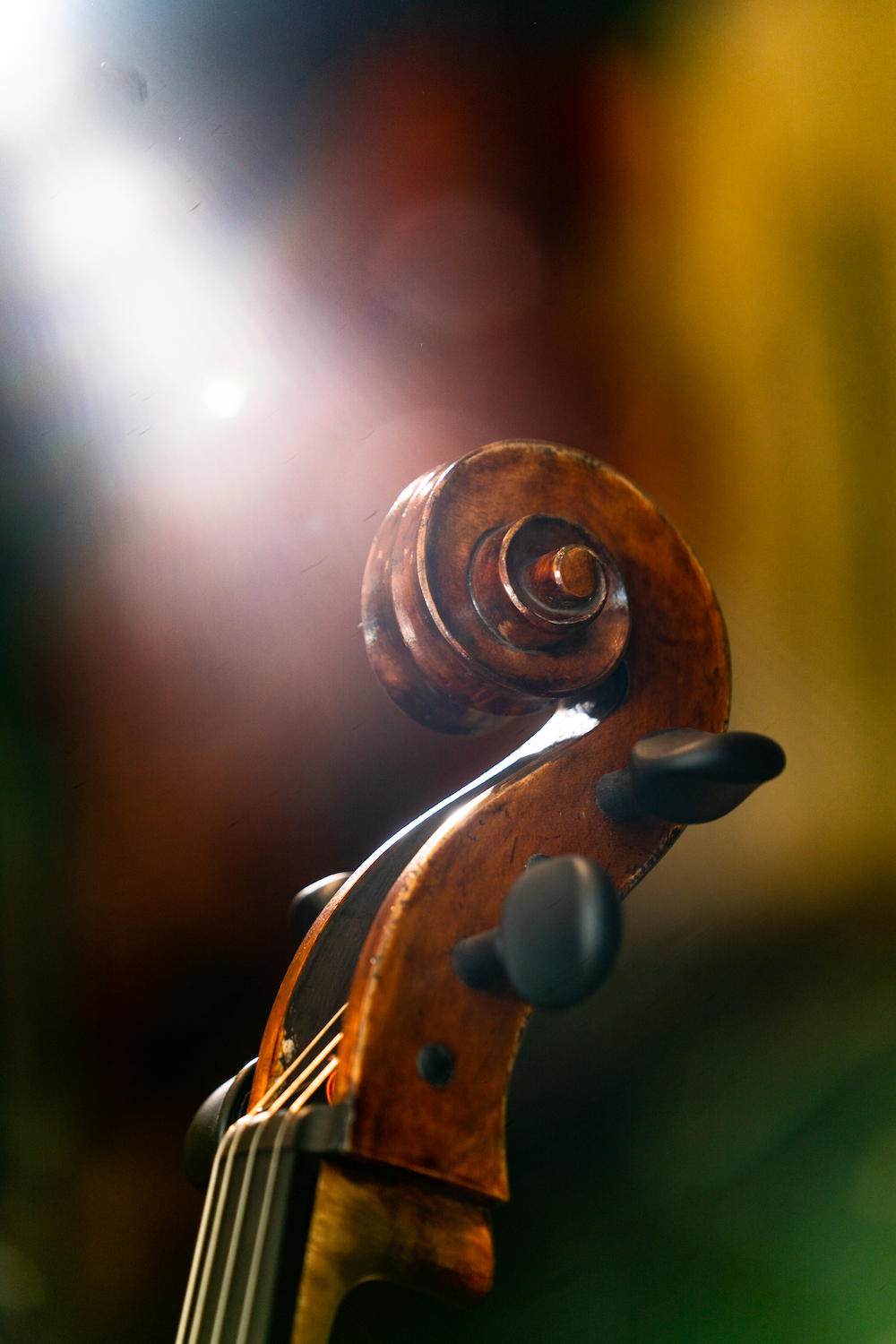Introduction: The Importance of Proper Cello Tuning
When you embark on your journey of playing the cello, one of the fundamental skills to master is proper tuning. It’s not just about hitting the right notes; it’s about ensuring your cello produces the rich, resonant tones it’s capable of. Proper cello tuning is not only vital for your sound quality but also for your overall playing experience.
Why is tuning so crucial?
Imagine trying to create a beautiful piece of art with a palette of mismatched colors. Like an artist needs the right colors, a cellist needs precisely tuned strings to create harmonious melodies. When your cello is in tune, every note you play will sound clear and vibrant.
This guide delves into “How is a cello tuned?”, its reasons, the essential equipment you need, and the step-by-step process to ensure your cello produces its best possible sound.
Why Does a Cello Go Out of Tune?
It’s crucial to understand why this beautiful instrument often goes out of tune to embark on your journey of mastering the cello. Unlike more stable instruments like pianos, cellos are susceptible to various factors affecting their tuning. Here are some common reasons why a cello may lose its pitch:
- Temperature and Humidity: Cellos are wooden instruments, a material that expands and contracts with changes in temperature and humidity. These fluctuations can cause the cello’s wooden components, including the sound post, neck, and fingerboard, to shift, affecting the tension of the strings and, consequently, the instrument’s pitch.
- Playing and Handling: Playing the cello, especially with passion and vigor, can stress the strings, causing them to stretch and lose tension over time. Handling the pegs and fine tuners during adjustments can inadvertently alter the pitch.
- New Strings: Installing new strings or adjusting the existing ones can lead to initial instability. New strings stretch and settle into their pitch over time, requiring frequent tuning until they stabilize.
- Age and Wear: The materials may change as cellos age, affecting the instrument’s resonance and tuning stability. Wear and tear on the strings and other components can also contribute to changes in pitch.
- Environmental Changes: Moving your cello from one location to another, especially when transitioning between indoor and outdoor environments, can expose it to variations in temperature and humidity, leading to tuning discrepancies. Understanding these factors is essential as they will help you appreciate the dynamic nature of the cello and the need for regular tuning.
Essential Cello Tuning Equipment
You’ll need the right tools to embark on your journey of tuning your cello effectively. These essential cello tuning equipment items will help you achieve the best possible sound and maintain your instrument in peak condition.
1. Tuners
Cello tuners are electronic devices that make tuning your instrument incredibly accurate. They display the pitch of each string and indicate whether it’s too high or too low, allowing you to make precise adjustments. Modern tuners are often compact, easy to use, and an indispensable tool for any cellist, beginner or advanced.
2. Tuning Pegs Care and Upkeep
The tuning pegs are crucial for adjusting the tension of your cello strings. Proper care and maintenance of these pegs ensure they turn smoothly without slipping, making it easier to achieve precise tuning. Peg compound, a friction-increasing substance, can be applied to too-loose pegs.
3. Broken Strings
It’s essential to have spare cello strings, which can break unexpectedly. Replacing a broken string ensures you can continue playing and maintain the integrity of your cello’s sound. Investing in these essential tuning tools will help you keep your cello in tune and enhance your playing experience.
Types of Tuning Equipment

When tuning your cello, having the right equipment is essential for precision and accuracy. Understanding these types of tuning equipment will empower you to keep your cello sounding its best. Here are some kinds of tuning equipment every cellist should be familiar with:
Tuners
Electronic tuners are invaluable tools for cellists, especially beginners. These tiny devices provide visual feedback on your cello’s pitch, making tuning a breeze. Here’s how they work:
- Clip-On Tuners: These attach directly to your cell phone’s scroll or headstock, allowing you to tune hands-free while observing the digital display.
- Pedal Tuners: Commonly used by stage performers, pedal tuners offer quick tuning adjustments during live performances.
- Smartphone Apps: Several cello tuning apps are available for Android and iOS devices, making it convenient to tune on the go.
Investing in a quality tuner ensures accurate and hassle-free cello tuning, whether you’re a beginner or an experienced cellist.
Caring for Tuning Pegs
Tuning pegs are crucial components of your cello, responsible for adjusting string tension. Proper maintenance ensures their smooth operation. Here are some care tips:
- Lubrication: Periodically apply peg compound or peg drops to prevent pegs from sticking, making tuning easier.
- Gentle Handling: Always turn pegs gently to avoid forcing or damaging them.
- Peg Maintenance: Check for wear and tear regularly. If a peg is damaged or slipping, consult a professional luthier like Ronald Sachs Violins for repair or replacement.
By caring for your tuning pegs, you’ll maintain your cello’s pitch stability, allowing you to enjoy playing without interruptions.
Dealing with Broken Strings
A broken cello string can be disheartening, but it is a common issue. Here’s what to do:
- Assess the Damage: Identify the broken string and its location – whether it’s a lower or upper string.
- Remove the Broken String: Carefully unwind the broken string from the peg and tailpiece.
- Replace the String: Purchase a high-quality replacement string and follow the manufacturer’s instructions for installation.
- Tune and Test: Once the new string is in place, tune it carefully and test the sound to ensure it matches the other strings.
If you need clarification or are uncomfortable with string replacement, consult a professional luthier like Ronald Sachs Violins. Regular maintenance can prevent string breakage.
How to Tune a Cello?
Tuning your cello is essential for any cellist, whether a beginner or an experienced musician. A proper tuning process ensures that your cello produces the correct pitches and harmonizes with other instruments. Here’s a step-by-step guide on how to tune your cello:
- Start with the A String: Begin by tuning the A string to the reference pitch of 440 Hz. You can use a piano, tuning fork, or an electronic tuner as a reference.
- Tune the Other Strings: Once the A string is in tune, use it as a reference to tune the D, G, and C strings. Press down on the string’s midpoint (around the 4th or 5th fret) while plucking it to match the pitch with the A string.
- Fine Tuners: Most cellos have a fine tuner installed on the tailpiece for minor adjustments. Use these to fine-tune each string’s correct pitch.
- Check and Recheck: After tuning all strings, play open strings, harmonics, and different notes to ensure they are in tune.
- Regular Maintenance: Cello strings can go out of tune due to temperature changes and playing. It’s essential to check and adjust the tuning regularly. If you cannot do so, seek expert assistance at a violin store in Atlanta.
How to Tune Your Cello with Fine Tuners and Pegs?
Tuning your cello involves using fine tuners and pegs, integral parts of a string instrument. Whether you’re a beginner or an experienced cellist, knowing how to use these components effectively is crucial for maintaining proper pitch and sound quality.
Fine Tuners:
Fine tuners are small mechanical devices typically located on the tailpiece of your cello. They allow for precise and subtle adjustments to the tension of each string. Here’s how to use them:
- Initial Tuning: Use the fine tuners to bring your cello’s strings into a rough tune. You can start with the A string and then proceed to the D, G, and C strings.
- Plucking and Turning: Pluck the string you want to tune while turning the fine tuner clockwise to raise the pitch or counterclockwise to lower it. Make minor adjustments and frequently check the pitch until it matches the correct note.
- Balance the Tension: As you tune each string, ensure the tension across all four strings is balanced. This balance is crucial for the cello’s stability and overall sound quality.
Pegs:
Pegs are wooden shafts located at the scroll end of your cello. You can use them for coarse tuning adjustments. Here’s how to use them:
- Loosening and Tightening: To lower the pitch of a string, turn the peg inward (counterclockwise), which loosens the string. To raise the pitch, turn the peg outward (clockwise) to tighten the string.
- Gently Turn: When using pegs, always turn them gently and gradually. Sudden, forceful movements can damage the cello’s structure.
- Apply Peg Compound: The four tuning pegs may sometimes become difficult to turn due to changes in humidity. Applying peg compound or chalk can help make tuning smoother.
How to Check If Your Cello is in Tune?
Checking if your cello is in tune is crucial for every cellist. Even if you’ve meticulously tuned your stringed instrument, slight changes in temperature and humidity can affect the tuning. Here’s how to ensure your cello is in perfect harmony:
1. Use a Tuner:
An electronic tuner is one of the most accurate ways to check your cello’s tuning. Attach the digital tuner to your cello’s bridge or scroll, and it will display the pitch of each string. This method ensures precision and helps you make real-time adjustments.
2. Tune by Ear:
Developing your ear for tuning is essential for every cellist. Start by playing open strings and comparing their pitch to a reference pitch (e.g., a piano, tuning fork, or online reference). Listen carefully for any discrepancies and adjust the pegs or fine-tuners accordingly.
3. Harmonize with Intervals:
Another effective method is to play intervals like fifths and octaves. When the strings are in tune, these intervals will resonate beautifully. If you hear any wavering or dissonance, it’s an indication that your cello needs tuning.
4. Check the Pegs:
Ensure that the pegs remain in place after tuning. Pegs can slip, causing the cello to go out of tune again. Gently push them inward while tuning to prevent slippage.
5. Regularly Check During Practice:
It’s good practice to check your cello’s tuning periodically during practice sessions, especially if you’re playing for an extended period. Frequent checks help maintain a consistent pitch.
Conclusion: Mastering Cello Tuning for Optimal Sound
In music, precision is critical, and tuning your cello is the gateway to achieving the best sound possible. Whether you’re a beginner or an experienced cellist, the ability to tune your instrument is a fundamental skill.
By understanding why a cello goes out of tune, having the right equipment, and knowing how to tune with finesse, you empower yourself to create beautiful music. Regularly checking your cello’s tuning ensures that it remains in perfect harmony.
At Ronald Sachs Violins, we’re passionate about helping cellists of all levels achieve their musical aspirations. Discover our exceptional cello instruments, accessories, and cello bows for sale to enhance your musical experience; we even offer cello rentals. Tuning your cello is just the beginning of your extraordinary musical journey.
